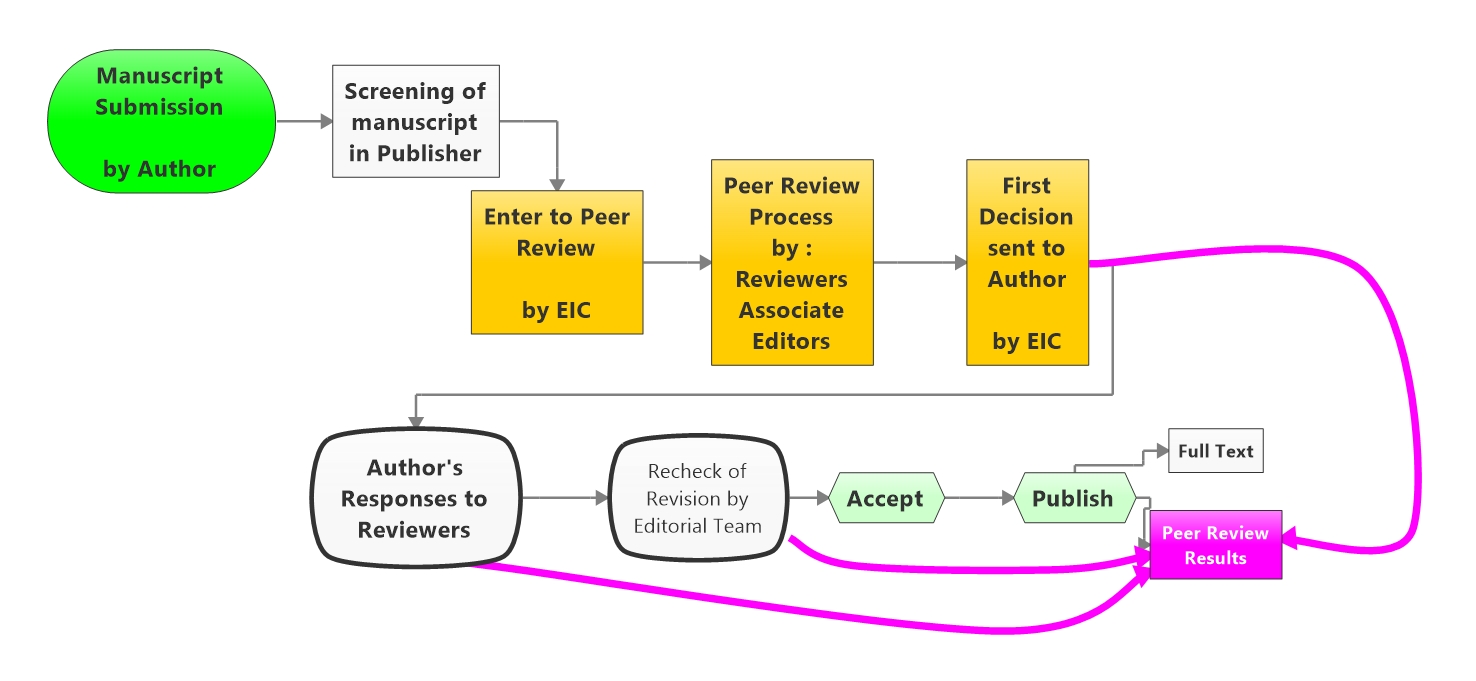Open Peer Review (OPR)
What is Open Peer Review?
Background & aim:
After 12 years of working with reviewers and associate editors, we decided to open a new window for all of our editors and authors titled "Open Peer Review." We hope to motivate our reviewers and satisfy our authors more during this new facility's review process.
We believe that publishing our peer review reports could make a transparent and clear environment for all our efforts within a journal, but not all reviewers tend to post their comments.
What is the "Open Peer Review" process?
An "Open Peer Review" process makes the details of all review processes (including reviewers, associate editors, and EIC comments) as "Public" as it is agreed upon by the EIC, Authors, and reviewers.
Advantages of the "Open Peer Review" process
- More transparency, constructiveness, and tactful comments in the peer review process: lead to an increase in the quality of reviews.
- More motivations for all involved roles in the review process
- Authors' satisfaction from the review process: Increases honesty between authors and reviewers
- Education of both authors and new students
- It prevents reviewers from following their agendas and leads to the detection of reviewers' conflicts of interest.
We started the "Open Peer Review" project on 1 September 2019 in all Brieflands journals.
Disadvantages of "Open Peer Review"
- In some cases, the "Decline for Review" rate may be increased.
- More claims from some English-speaking authors regarding the quality of comments
- There may be a threat against high-risk authors in their scientific life.
Types of reviewers in Open Peer review
- Signed-Reviewers: These reviewers agree to declare their names and affiliations on the public journal website.
- Anonymous Reviewers: These reviewers are anonymous to the public but are known for EIC, while only their comments will be publicly available.
Which Publishers are using "Open Peer Review"?
Based on a simple search, we have found the below publishers tried/are trying the "Open Peer Review" process in some of or all of their journals:
- BMJ
- Biomed Central
- EMBO Press
- Publons: Publons maintains a list of journals to display peer-reviewed information, though what information can be displayed varies. However, this is not a complete list of all journals publishing peer review reports.
- TRANSPOSE: This new initiative provides a framework for collecting journal policies on open peer review, co-reviewing, and preprinting. Contributions from anyone are welcome.
Basic Structure of a Report of Open Peer Review
A report sample from one of the EMBO journals.
- This report could be in HTML or PDF format.
- The report must be linked (included) in the HTML full text of an article.
- A separate DOI is assigned to the report so that the reviewers and authors can easily cite their comments.
- Header: Journal info, article meta
- Title of the article, authors, all important dates (in the Review Timelines), editor's name
- Editor's note
- All editorial decisions, including EIC, AE, and Reviewers (role, date, details)
- Authors' response (date, details)
- Final editorial decisions
The EMBO press described the related issues.
A model of the Peer Review process and contents of an Open Peer Review Report
Here you may find a sample model of the open peer review process in Brieflands journals.
Our ultimate goal
We have developed this option as a new feature of our journal management system under consultation with our editorial board and all our expert reviewers to find the best way to create a transparent environment for both our authors and reviewers. In this challenging way, we need your war messages that are more than welcome. Please be in contact with us via our support portal.
ASAPbio
ASAPbio (Accelerating Science and Publication in Biology) is a scientist-driven nonprofit working to address this problem by promoting innovation and transparency in life sciences communication. In the FAQ pages of this website, you may find much exciting info about Open Peer Review. Read also this commentary.

